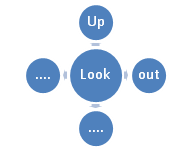One of the most dreaded topics for English learners is phrasal verbs. Why are they so afraid of them if we use them so much in our daily life? The answer is simple, their meaning isn’t always literal. For example, with verbs like ‘get up’, you can guess the direction and the type of the movement, but what about ‘turn out’? Students get very confused about the use of those, so they just prefer to avoid them. The question is what is the best way to break that fear and let the students enjoy learning new phrasal verbs?
Download Your FREE Ultimate Guide to Teaching Business English Skills HERE
My first suggestion would be coming up with lists of phrasal verbs (7 to 10 verbs at a time) that correspond to a certain topic, for example:
- Everyday activities: get up, wake up, get on the bus, put on clothes etc.; relationships: break up, make up, turn out, get on with, go out etc.
- Business: take over, turn into, cut back on, count on etc.; crimes: break out, break in, turn in etc.
Based on the topic, you can come up with a story for your students to read or listen to, which is really effective for putting the target language into context. The problem the students usually face is that they learn the definitions for phrasal verbs but then never know when to use them. For example, one of my students once said “I turned down talking to her”. This mistake probably occurred because the student learnt the meaning of ‘turn down’ as ‘refuse’, but he didn´t realize that those two words cannot be used interchangeably. Using context will give your students an idea on how phrasal verbs are used naturally.
Lower levels
- Introduce phrasal verbs in a context
- Practise them by playing matching games or games where the students have to use the phrasal verbs in a sentence (tic-tac -toe, dice, bull’s eye)
- Give your students a situation where they can use the phrasal verbs freely, for example they can write a story or act out a dialogue
Higher levels
Higher levels already have some knowledge of phrasal verbs, which means that you can introduce one verb at a time and just change prepositions/particles. One of my favourite activities is creating a spider diagram with your students. I usually draw the following diagram on the board and ask my students to fill the diagram in with prepositions:
After the students brainstorm all the prepositions they know to use with a certain verb, they can start coming up with definitions and examples to put those phrasal verbs into context. It is really important for you as a teacher to correct a lot at this point because you want the students to get the right context for the phrasal verbs and use them appropriately.
Summary:
- Brainstorm prepositions and come up with definitions for each phrasal verb
- Practise phrasal verbs through different games (the same games as for lower levels can be used)
- Let the students use the phrasal verbs freely by writing a story or talking on a certain topic.
Basically, as long as the students do not have to deal with endless lists of phrasal verbs they will treat them as just new vocabulary units and keep building up on their database of phrasal verbs.
Following the structure for the lessons mentioned above you can make learning phrasal verbs interesting and fun!


Comments are closed.